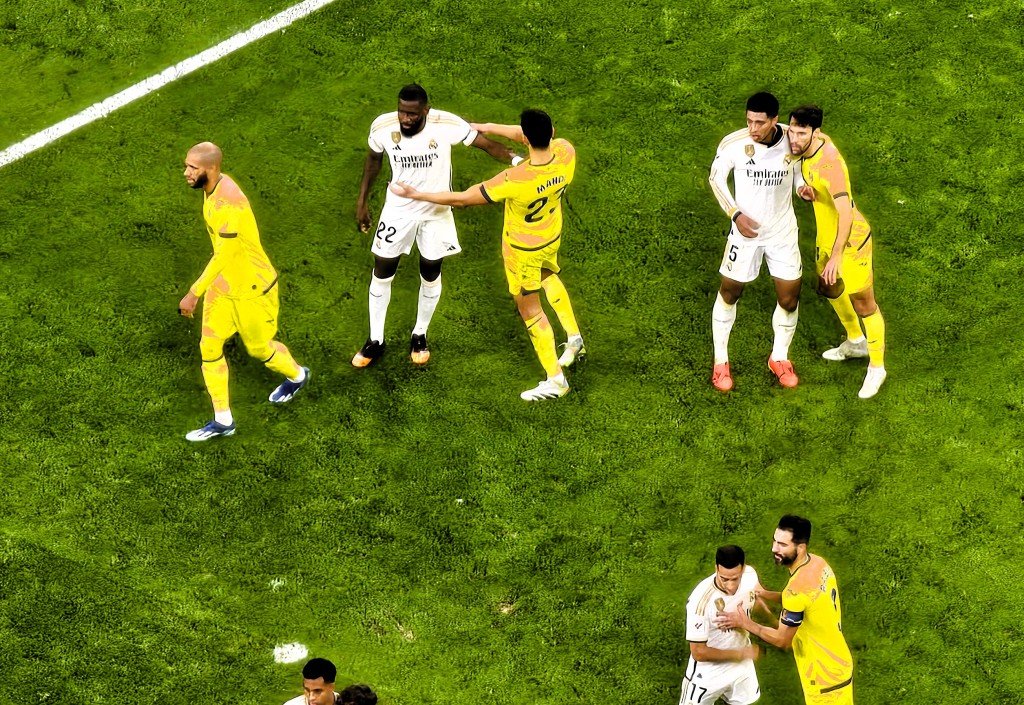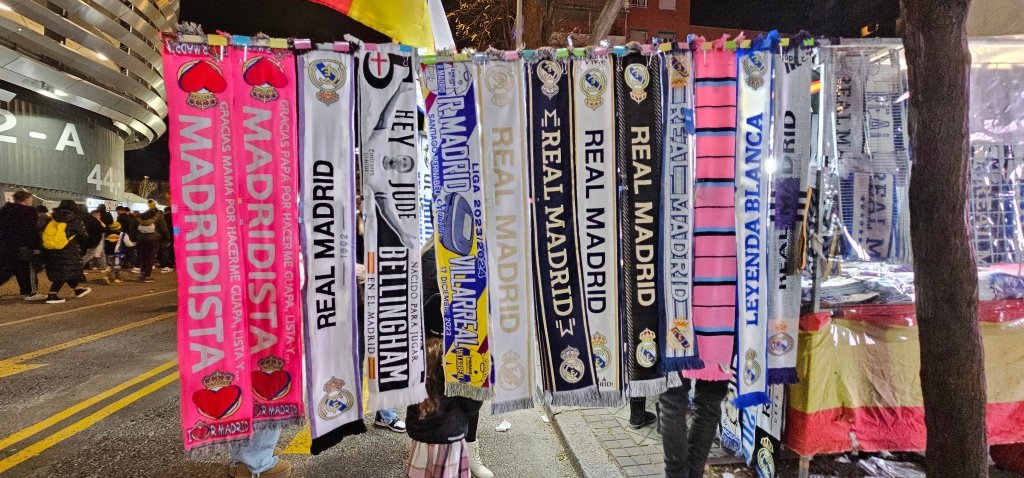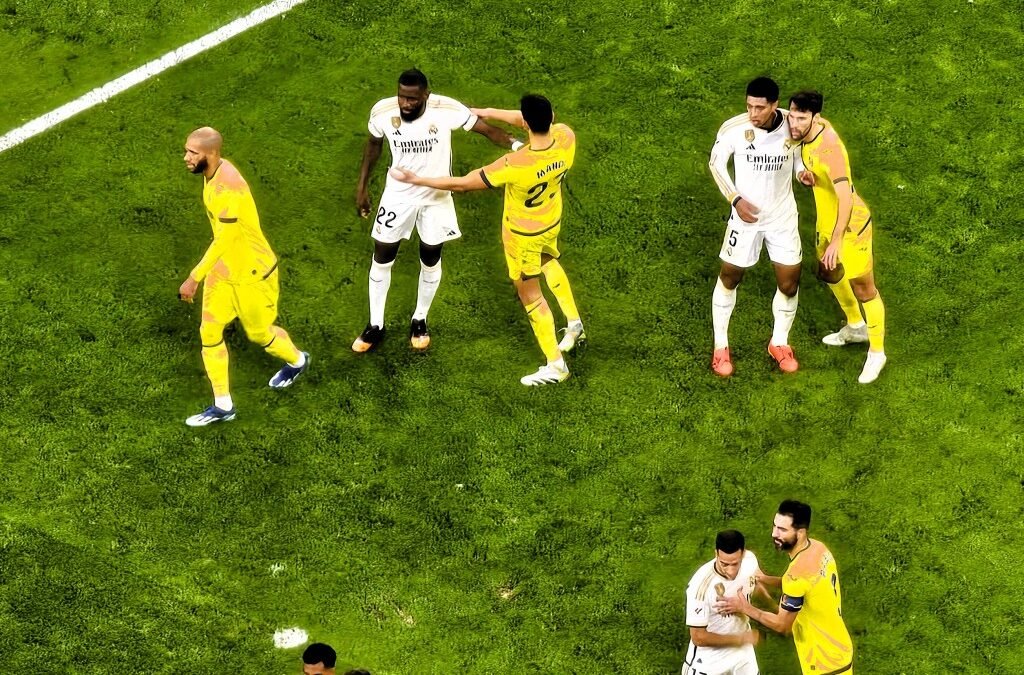By Michael Kinney
During my time as a sports journalist, I have covered many athletic competitions. Everything from the NBA championships to Yacht racing is somewhere on my resume.
However, during that time, one of the few events I had yet to check off my list was European soccer. And truthfully, it wasn’t I really had any interest in taking in.
Soccer has never been at the top of my favorite sports. While watching the World Cup on TV can be entertaining, it has never grabbed hold of my interest in the same manner as a few other sports.
Yet, on Dec. 17 of last year, I somehow found myself in Madrid, Spain, surrounded by more than 80,000 screaming ‘football’ fans watching my first euro league match. As I sat shivering in the nosebleed section on that frigid Spanish night, I asked myself several times, what the heck am I doing here?
When I found out I was going to Europe in December, I thought it would be the perfect opportunity to at least see what all the excitement was about. While staying in Portugal, I looked around to see if any local soccer teams would be playing during my stay. What I discovered instead of that one of the most well-known soccer clubs in the world was just a two hour flight away in Spain.
So, if you are going to do something, do it big are words I live by. I booked my flight ($45)) and started studying up on the history of Real Madrid.
Founded in 1902 as the Madrid Football Club, the team adopted the name Real Madrid – meaning “Royal” – in 1920 when King Alfonso XIII bestowed the club with the royal title. This regal association marked the beginning of a storied history that has since seen Real Madrid evolve into a soccer dynasty.
The club’s first major success came in the 1950s when they clinched five consecutive European Cup titles, a feat unmatched to this day. Spearheaded by legendary figures like Alfredo Di Stéfano and Francisco Gento, this era solidified Real Madrid’s reputation as a powerhouse in European football.
Fast forward to the “Galácticos” era of the early 2000s, where the club’s President, Florentino Pérez, pursued a policy of signing world-class players, including Zinedine Zidane, Ronaldo Nazário, and David Beckham. The result? Three UEFA Champions League titles in five years, etching Real Madrid’s name indelibly in football history.
From what the locals tell me, it’s impossible to discuss Real Madrid without acknowledging the rivalry with FC Barcelona, in a clash known as “El Clásico.” This intense competition has produced unforgettable moments and iconic players, adding an extra layer of drama and excitement to the club’s narrative.
The Santiago Bernabéu Stadium, named after the club’s former president, has been witness to countless historic moments. From hosting European Cup finals to witnessing the talents of Cristiano Ronaldo, the stadium stands as a hallowed ground for soccer enthusiasts.
With a trophy cabinet adorned with domestic and international honors, Real Madri’s history made it the perfect place for me to get a taste of the euro soccer fervor.
I flew into Madrid the night before to take in the sights and sounds of a new city. I found fans from both Real Madrid and Villarreal out and about doing the same.
The Spanish LALIGA league match was held was held on Sunday night at the newly renovated Santiago Bernabeu Stadium. While it doesn’t compare to Cowboy’s Stadium in Dallas, the 83,000-seat behemoth was impressive. Since your ticket determines where you are allowed to enter the stadium, it took me an hour to actually get inside.
Except for some industrial-size heaters on the stadium’s ceiling, there were no other detectable heating sources that I could find. And with temperatures dipping below 40 degrees outside, it made the game atmosphere uncomfortable unless you are used to it.

But as far as the game itself, there were brief moments of excitement followed by long spells of not much going on. Except for when players for both Real Madrid and Villarreal seemingly would get injured and lay on the ground in what appeared to be intense agony.
Yet, they would miraculously jump up and sprint to the action if the referees didn’t call a penalty or just ignored them altogether. I assumed their instant recuperative abilities were due to the fact that Europeans have an unwillingness to season their food. (They don’t even put salt and pepper on the tables).
Regardless, Real Madrid (14-3-1) did what was expected and rolled to a 4-1 victory over Villareal (5-4-9(. Luka Modric chipped in with a goal and an assist. The one serious injury saw David Alaba suffer an ACL injury that will keep him sidelined for some time.
Real Madrid is currently sitting in first place Spanish LALIGA standings.
While I found the game lacking, I was impressed with the total atmosphere surrounding it. The Real Madrid fan base was at a level 8 frenzy an hour before the game started and it never dropped below that.
It seemed like each and every one of the 83,000 fans had on a team jersey, shirt or scarf. I saw kids as young as 2 or 3 and great-grandparents all decked out in Real Madrid uniforms.
Whenever one of their players lay on the ground with an “injury”, they screamed bloody murder. But when an opponent did the same tactic, the boos reigned down from the heavens.
Even the Villareal fans, who were all put in one tiny section of the stadium and surrounded by police officers, were loud and boisterous.
The overall atmosphere rivals or exceeds that of the top college football and NFL games I have attended. While European soccer games do not have the tailgating culture that developed in the United States, they are inching closer to making that a part of the show.
Even though it wasn’t the World Cup or a Champions League contest, it was entertaining. Not the game, but just the overall atmosphere and fans. Which is really what makes a great sporting event anyway.

IG: mkinneymedia
X (Twitter): MKinneyMedia
Youtube: Michael Kinney Media
Photos (SmugMug): Michael Kinney

